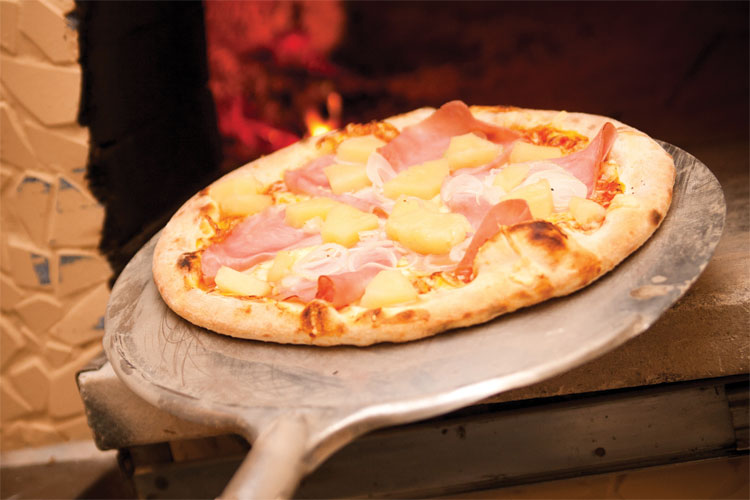Question:
I’ve made pizzas at home using high-absorption dough, often exceeding 70%. Why don’t I see more pizzerias using them?
Answer:
We are seeing more pizzerias, especially the newer “artisan” pizzerias, using high-absorption dough. These doughs are quite soft and more difficult to handle than standard doughs, which are made with absorption values in the 50% to 60% range. Baking them in ovens can be problematic; they require the use of a baking disk or screen, as the dough may flow into the openings under the weight of the ingredients during the early stages of baking, effectively locking the crust onto the screen/disk.
There is a learning curve for handling these doughs as well as a difference in the pie’s finished quality characteristics. So high-absorption doughs aren’t right for all pizzerias, but they’re compatible with the new artisan-type pizzerias in which stone hearth and wood-fired ovens are all the rage. These pizza makers aim to produce a pizza that’s different from the norm in both appearance and textural characteristics.
Question:
I’ve noticed you prefer to use tomato filets or slices of fresh, ripe tomatoes rather than a conventional sauce on your pizzas. Why?
Answer:
I’ve grown tired of run-of-the-mill pizzas and figured it was time for a change. I’ve been using drained tomato filets or fresh slices for several years now, and I’ve seen some advantages to it. Unlike a traditional sauce, the filets or slices don’t provide 100% coverage of the pizza, and I find that the pizzas bake out more thoroughly. I also get better control of the moisture that’s released from the toppings during baking. Additionally, I’ve noticed that the bottom of the pizzas get a stronger bake, sometimes even with a little char, which, to me, is a good thing. And the tomato slices and filets add a certain texture to the pizza, as well as flavor and eye appeal.
However, the assembly of the pizza requires slight modifications. To replace the oil that would normally be present in the sauce, I brush olive oil onto the dough skin prior to dressing it. I then add garlic and other seasonings, such as fresh, green leaf basil or oregano. (Just be sure to cover the fresh basil or oregano with the tomato pieces to prevent them from being charred during baking.) I then peel fresh mozzarella cheese like an orange to create irregular sized pieces that are placed randomly on the pizza, and I sprinkle shredded Parmesan and Romano cheese for an added dimension of complexity. This presentation meets my current needs, but I’m sure I’ll dream up something a little different again, just to keep my taste buds excited.













